10 Best Workout & Exercises for Weight Gain
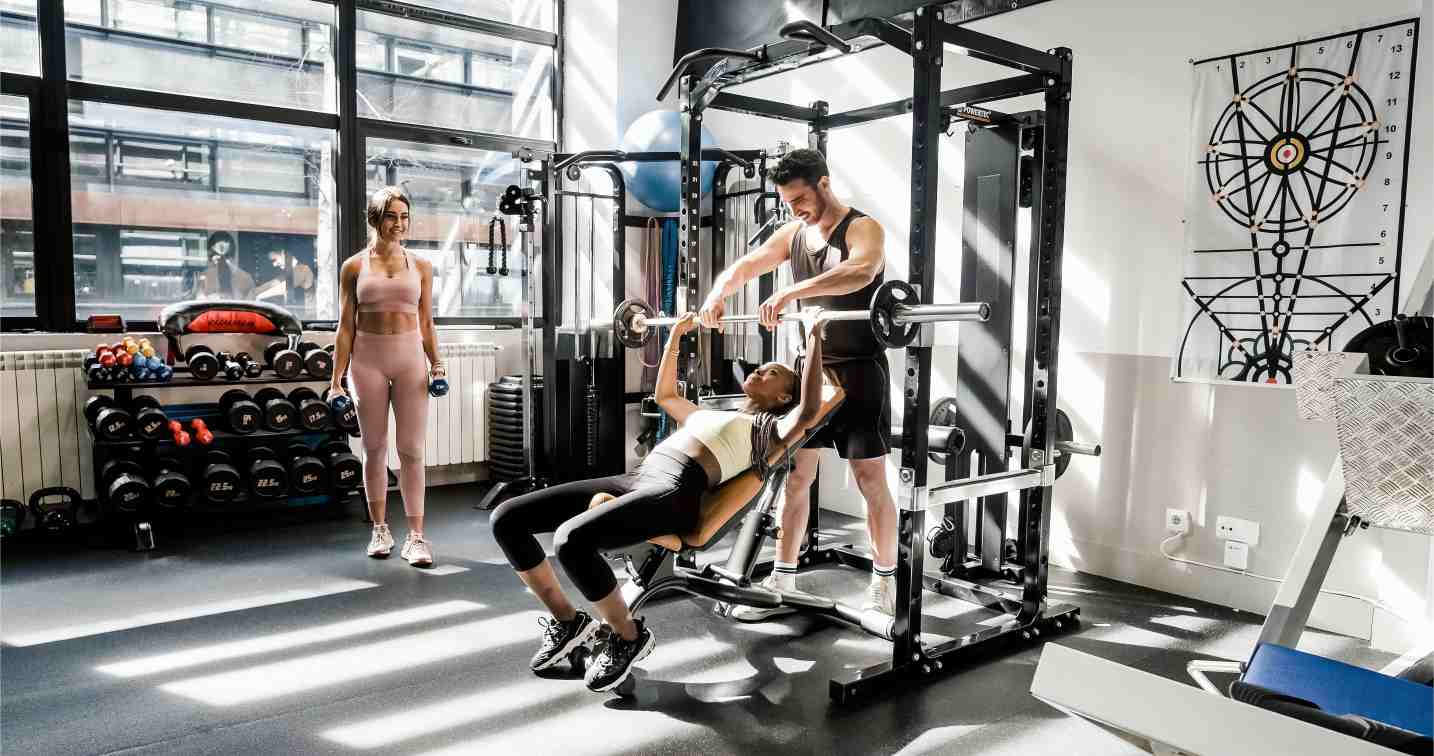
Most individuals assume that exercise is a means of losing weight. However, incorporating the right exercises with the correct dietary routine, based on your body type, can distribute the fat proportionately and help you build muscle and lean mass.
This improves your physique and increases body strength. The upcoming segment lists practical exercises for gaining weight, which can help you achieve the body you want.

Table of Contents

Importance of a Healthy Weight
Overall well-being and longevity depend on maintaining a healthy weight. This reduces the chances of getting diseases like diabetes, heart disease, and hypertension. A reasonable body weight facilitates more effortless mobility and physical functioning that improves life quality. It also enhances mental health through mood enhancement and reduction of anxiety and depression.
In addition, proper weight management ensures optimum hormonal regulation, which is essential for different body functions. It also improves sleep quality and energy levels, allowing more productive daily routines. Lastly, it betters immune function, thereby increasing resistance to infections.
Top 10 Workouts to Gain Weight for Women and Men
Although the muscle mass distribution and body composition are different in men and women, the exercises for weight gain are quite the same for women and men. These exercises are easy to execute and can be easily performed at home. So, without any delay, let’s take a look at each of them:
1. Push-ups
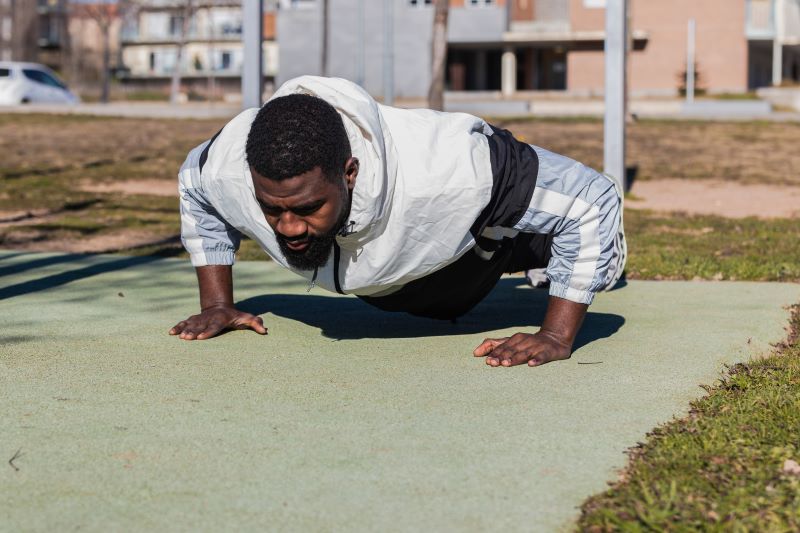
Push-ups are an excellent exercise to build pectorals and strengthen your upper body. It is a perfect exercise you can do without equipment to gain weight.
Steps to Do Push-ups:
- Lie down on the ground and keep your face down.
- Keep your hands in a way that appears broader than your shoulder.
- Now, slowly push yourself up so that your arms are extended. Then lower your chest to the ground.
- Pause for a while and again push yourself back.
Target Muscles: Pectoral (or chest) muscles, deltoid (or shoulder muscles), core muscles and triceps.
2. Pull-ups

The muscles in women’s shoulders, back, and biceps are smaller than in men’s. Hence, practising pull-ups are a great way to gain weight in these areas.
Steps to Do Pull-Ups:
- Hold the pull-up bar and note that your palms should face outward. Keep your hands in line with the shoulders.
- Pull yourself up to a level where your feet are off the ground and your chin is above the bar.
- Now, pull yourself down where your feet touch the ground and your arms are straight.
Target Muscles: Lats (or flat muscles at the back), biceps, forearms, trapezius (or centre muscles at the upper back), deltoid (or muscles at the lower back).
3. Squats
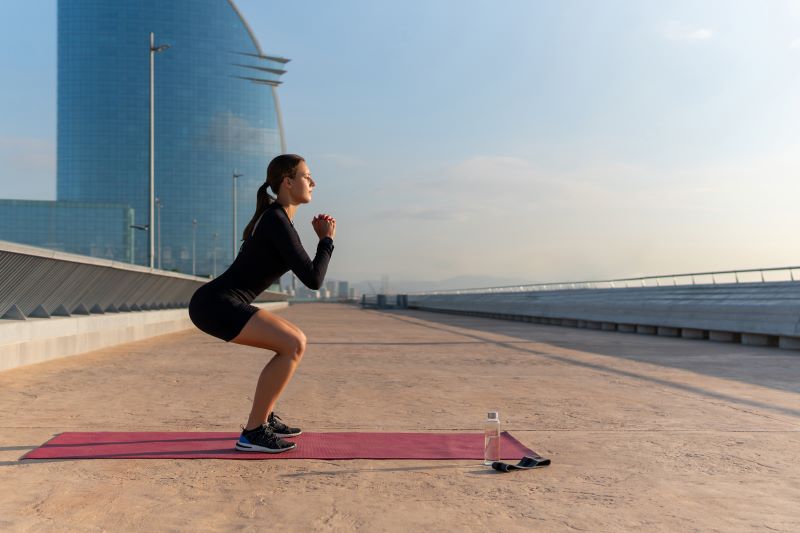
You can do squats for weight gain. It works on the biceps and quadriceps and tones and strengthens the lower portion of your body. Moreover, this is a great exercise to gain weight on the hips. You can carry weights and practice this exercise once you have learnt its basic form.
Steps to Do Squats:
- Stand straight and keep your feet in line with the hip.
- Your arms should be straight and perpendicular to the ground. You can keep your joined palms in front of your chest.
- Bend slightly and keep your body tight.
- Take a deep breath, engage the core and lower your hips where your thighs appear parallel to the ground.
- Keep your body weight on your heels while doing this exercise.
- Now, push yourself up and repeat.
Target Muscles: Hamstrings, glutes, outer thighs, core muscles, quads (such as thigh muscles).
4. Lunges
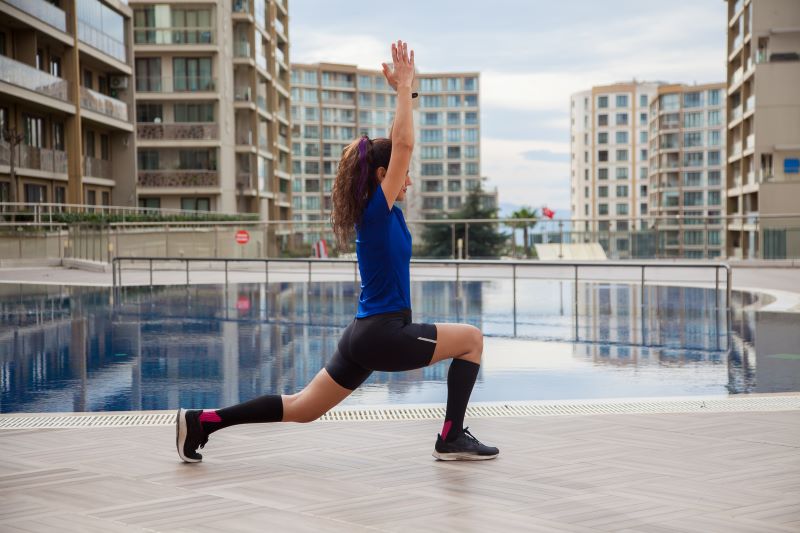
The muscles in women’s legs are delicate and small, making it difficult for them to gain weight there. Hence, lunges are one of the excellent exercises that you can do at home to gain weight. These exercises tone and bulk up your hip and leg muscles.
Steps to Do Lunges:
- Stand straight and keep your feet in line with your hips.
- Breathe deeply and step forward with your left leg and kneel down so that your right leg is perpendicular to the ground.
- Push yourself back to the original position by pressing on your heels.
- Repeat this on each side.
Target Muscles: Hamstrings, quadriceps, buttocks, glutes and core muscles.
5. Bench Press
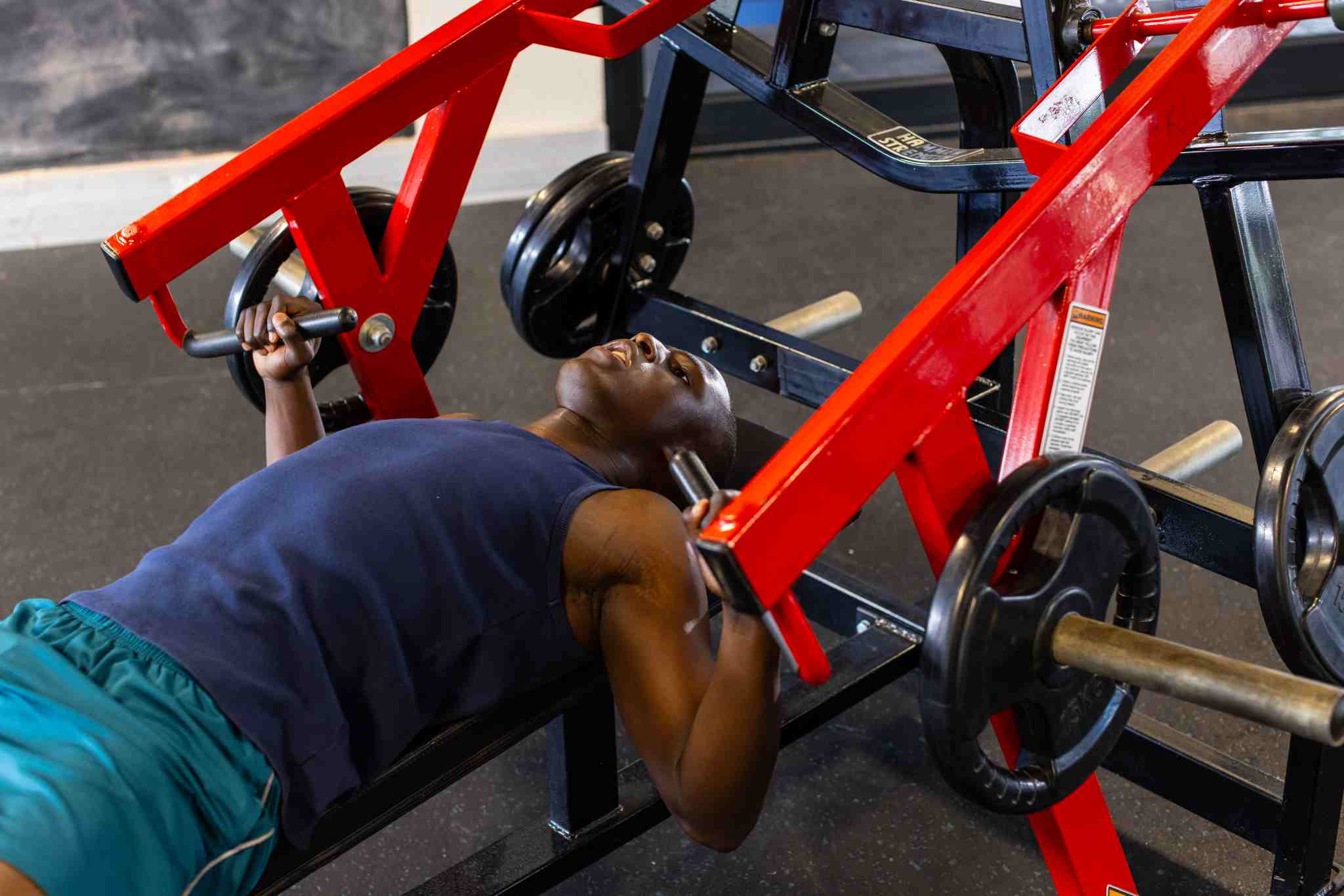
The bench press is an appropriate exercise to increase weight when you cannot carry weights in pull-ups. It works on your pectoral muscles and helps to build your biceps.
Steps to Do Bench Press:
- Lie on your back on a bench and stretch out your hands to hold the bar.
- Stretch your arms and lift the bar.
- Now, lower the bar near your chest or keep it back to the rack while keeping your arms at an angle of 90 degrees.
- Repeat this according to your comfort level.
Target Muscles: Traps and backs, anterior deltoid muscles, triceps.
6. Overhead Press
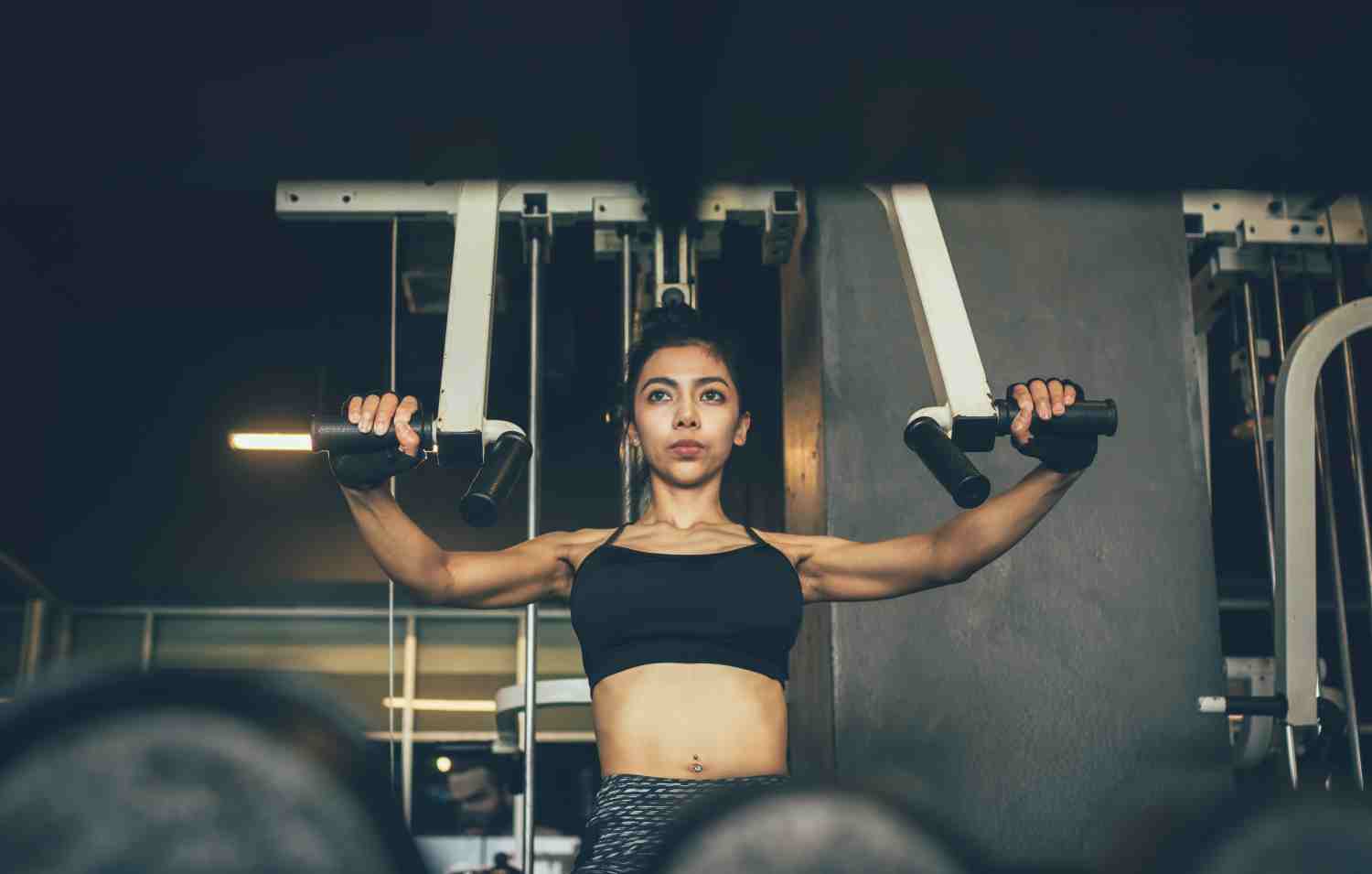
This exercise targets the pectoral muscle, which you can do with dumbbells and barbells. Alternatively, you can do this without gym equipment by using your body weight. This improves your body posture and strengthens back muscles.
Steps to Do Overhead Press:
- Keep your shoulders and hands wide apart, squat and hold the bar.
- Pull up the bar slowly near your chest or shoulder.
- Breathe deeply and pull the bar over your head until your arms are completely stretched. Keep your elbows firm.
- Now, lower the bar slowly to your shoulder.
- Repeat this as per your convenience.
Target Muscles: Upper back muscles, triceps, and deltoids.
7. Crunchy Frogs
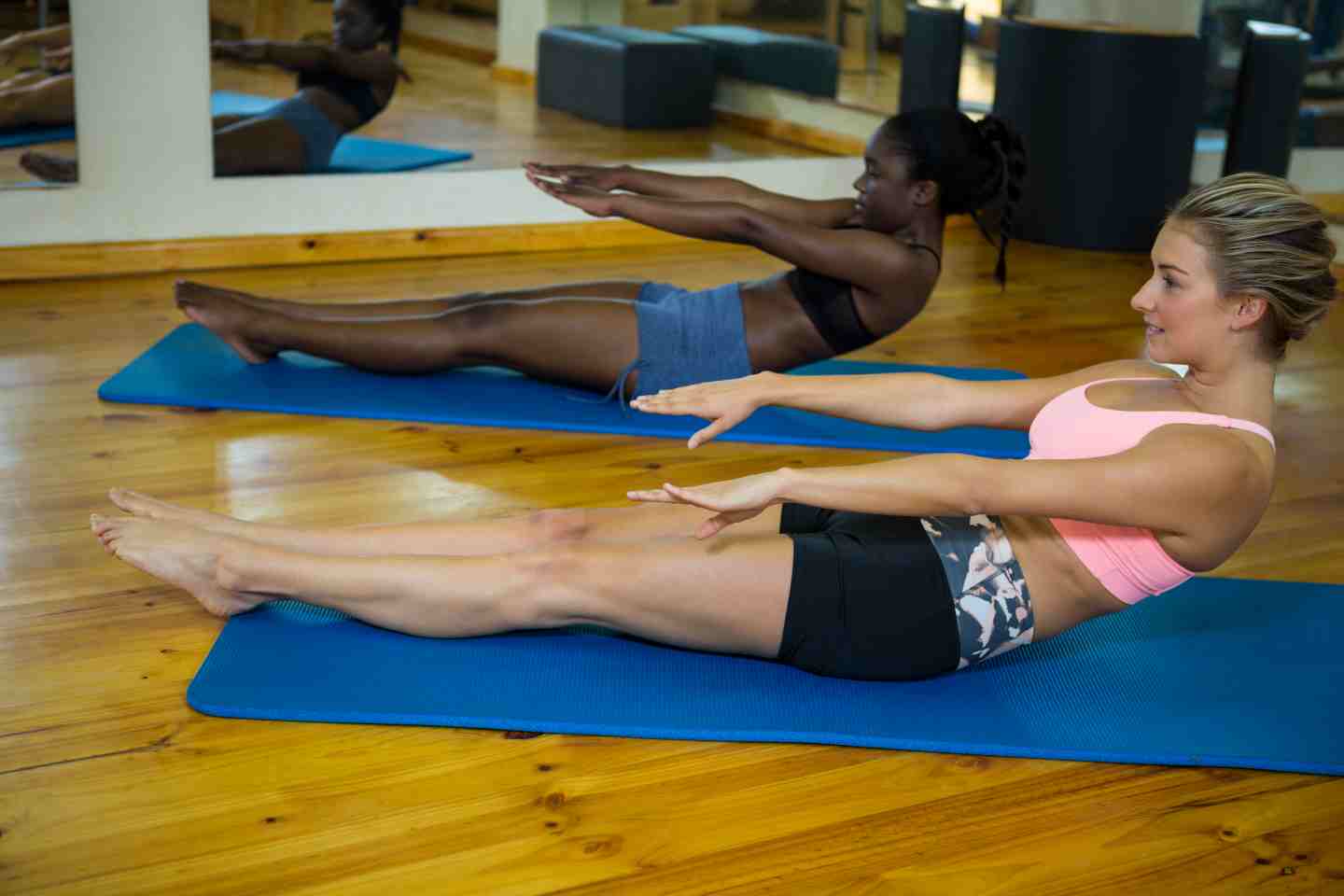
You can do this workout to gain weight at home that targets your legs and abs. It improves your body posture and balance.
Steps to Do Crunchy Frogs:
- Push yourself back to a 45-degree angle until you feel that your core muscles are slowly engaging.
- Pull out your legs in front and stretch your arms to the side, making a ‘T’ shape with your shoulders.
- Keep your body firm and back flat. Now by using your core muscles, pull your knees to your chest.
- While doing this, wrap your arms outside your legs and touch the knees.
- Pull out your legs to repeat.
Target Muscles: Muscles in the abdominal wall and oblique.
8. Deadlift
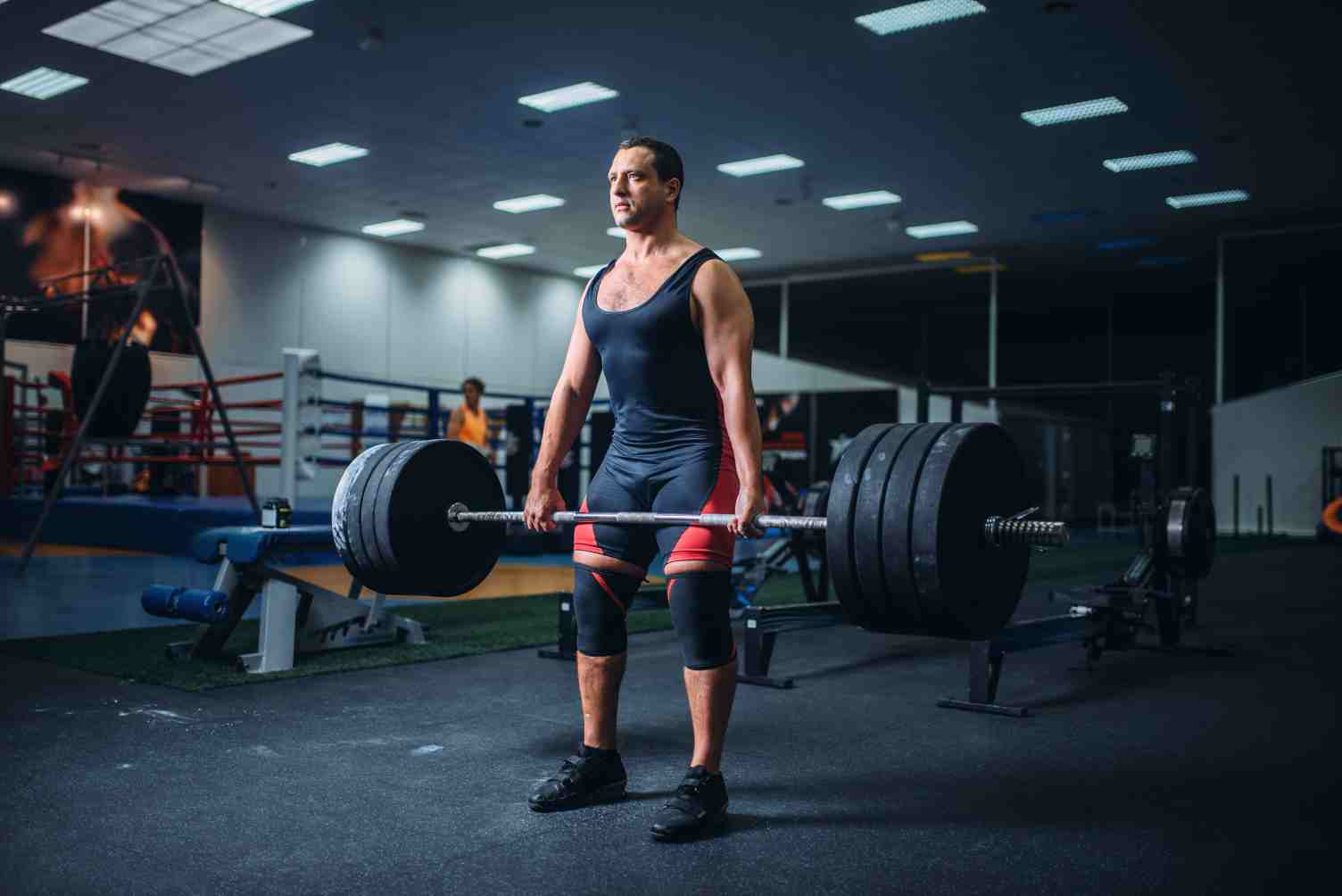
You can do this workout at home to gain muscle or at the gym by using kettlebells, dumbbells, or barbells. It increases your muscle mass, improves your posture and enhances and tones your leg muscles.
Steps to Do Deadlift:
- Stand straight and keep your shoulders and feet wide apart.
- Hold the bar and look straight.
- Keep your back straight, pull the bar up to your thighs, and then at your hip.
- Bend your hips slowly and put the bar back on the ground.
- Repeat according to your convenience.
Target Muscles: Hamstrings, core muscles and glutes.
9. Bent Over Rows
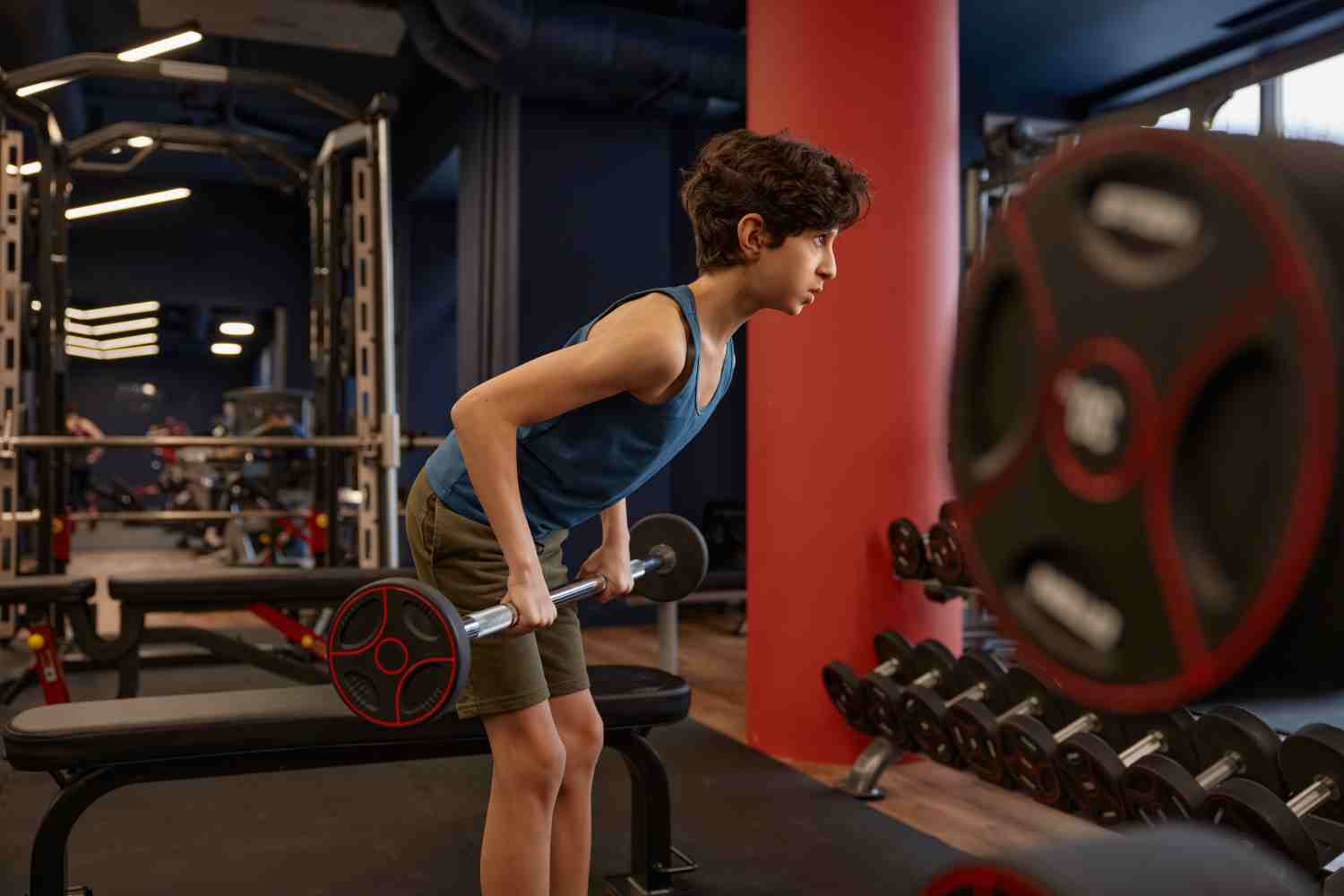
This is an excellent exercise for beginners to gain weight in the arms and back. If you have mastered this exercise, you can incorporate deadlifts into your exercise routine.
Steps to Do Bent Over Rows:
- Grab a barbell and slightly bend your knees, flex at the front at your waist. Keep your back straight.
- Keep your torso firm and still, and pull the barbell up towards you.
- When you lift the barbell to the top, squeeze your muscles at the back and hold this position for a few seconds.
- While doing this exercise, keep your elbows close to your body and use your forearms to lift the weight bar.
- Now, lower the barbell to return to the initial position and repeat as per your convenience.
Target Muscles: Biceps, shoulders, forearms, middle back muscles and lats.
10. Barbell Curls
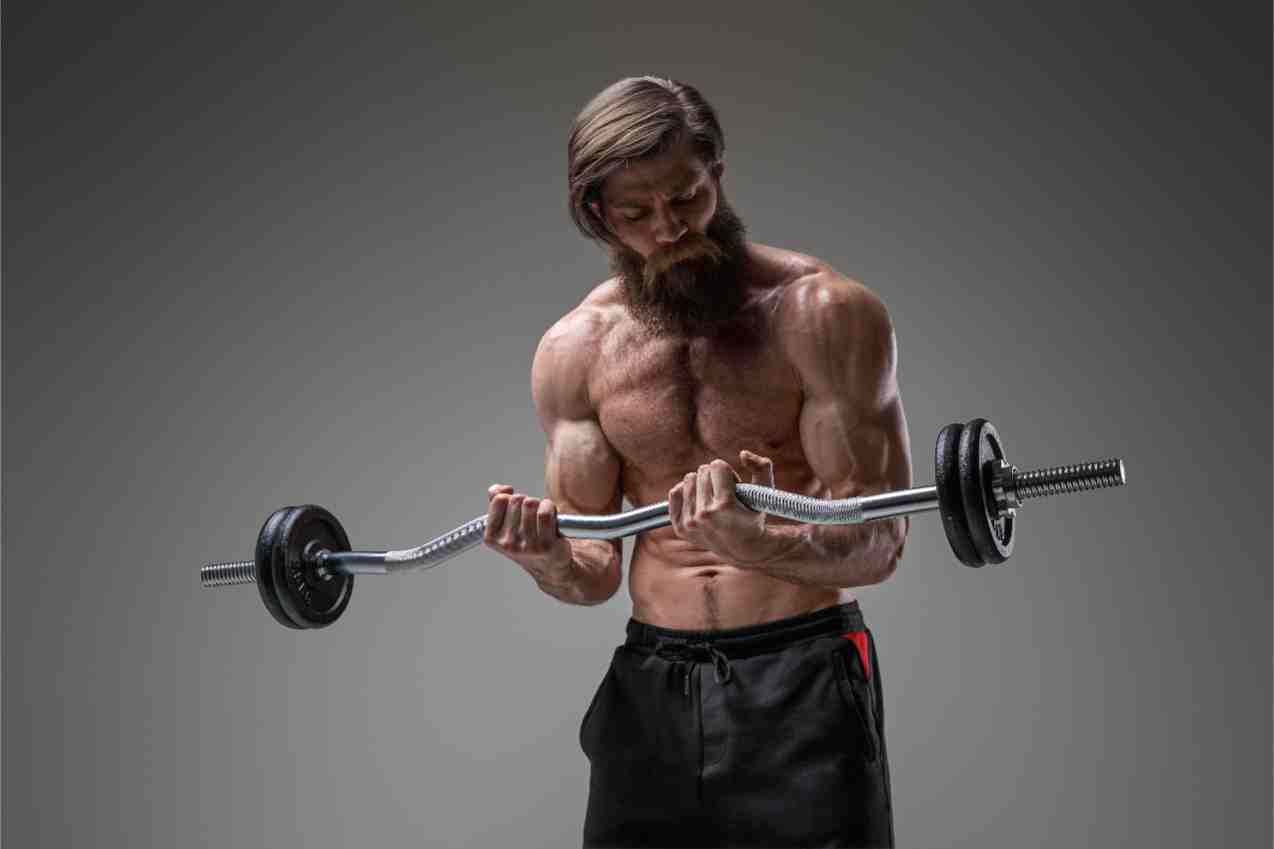
This exercise strengthens your arms, and grip increases the muscle mass of the upper portion of your body.
Steps to Do Barbell Curls:
- Stand tall, keep your chest up and hold up your core while grabbing the barbell with your hands outside your hips.
- Lift the barbell till you feel your biceps are engaged.
- Now, pull the barbell up to your shoulder and squeeze your muscle biceps for a second.
- Lower the bar while maintaining tension on your bicep muscles.
Target Muscles: Biceps and forearms.
Benefits of Exercises for Weight Gain
Incorporating specific exercises into your routine can be an effective strategy for healthy weight gain. Below are ten benefits that demonstrate how targeted exercise can support weight gain:
Enhanced Muscle Growth
Exercises such as weightlifting and resistance training promote hypertrophy, increasing muscle mass. This muscle growth improves physical appearance and boosts metabolic rate, aiding in sustainable weight gain.
Improved Metabolic Efficiency
Regular strength training enhances metabolic efficiency by increasing the muscle-to-fat ratio. This allows the body to burn calories more effectively, facilitating weight gain without accumulating excessive fat.
Increased Appetite
Engaging in high-intensity workouts stimulates appetite by increasing the body's energy demands. This natural increase in hunger supports a higher caloric intake, which is essential for gaining weight healthily.
Better Bone Density
Weight-bearing exercises, such as squats and deadlifts, strengthen bones by stimulating bone-forming cells. This improves bone density, reducing the risk of fractures and osteoporosis as body mass increases.
Optimised Hormone Levels
Exercise helps regulate hormones like testosterone and growth hormone, crucial for muscle growth and weight gain. Balanced hormone levels enhance protein synthesis and nutrient absorption, contributing to a healthier weight gain.
Improved Body Composition
Targeted exercises help redistribute body fat, improving overall body composition. This leads to a more defined physique, as muscle mass increases and fat is utilised more efficiently.
Enhanced Strength and Endurance
Progressive resistance training enhances muscle strength and endurance. This contributes to weight gain and improves overall physical performance, making daily activities easier and more enjoyable.
Improved Cardiovascular Health
Incorporating compound exercises improves cardiovascular health by increasing heart rate and circulation. This supports overall fitness and ensures that weight gain does not compromise cardiovascular function.
Which Body Parts Get Impacted While Exercising for Weight Gain?
Here is the list of body parts you must know that are exercised, targeted, toned, and used while exercising:
Body Part |
Description |
| Pectoral Muscles | These muscles are targeted by push-ups and bench presses, which help in chest expansion and upper body strength. |
| Deltoid Muscles | Engaged during exercises like push-ups and overhead presses, they aid in shoulder movement and stability. |
| Core Muscles | Activated by exercises such as push-ups, squats, and deadlifts, essential for balance, stability, and overall strength. |
| Quadriceps | Worked on through squats and lunges, supporting leg strength and stability. |
| Glutes | Enhanced by pull-ups and barbell curls, contributing to arm flexion and upper body strength. |
| Biceps | Developed by pull-ups, bent-over rows, and barbell curls, it is essential for arm flexion and upper body strength. |
| Lats | Targeted by pull-ups and rows, it is crucial for back strength and posture. |
Which is the Best Time of the Day for Exercising?
Optimal exercising time augments muscle growth and gains for those struggling with weight. The most suitable workout times vary depending on individual schedules and natural rhythms. However, some provide more advantages than others.
- Morning Workouts: Morning exercises help raise metabolism, increase energy levels, and enhance consistency in your routine. Additionally, this time is less likely to conflict with daily responsibilities, making it easier to keep an unvarying schedule.
- Afternoon or Early Evening: Afternoon and early evening workouts can take advantage of enhanced body temperature and hormone levels, which may facilitate performance improvement and muscle development. Alertness peaks at this period, while power is often at its best.
- Post-Meal Training: Working out a few hours after a meal ensures a carbohydrate and protein fuel supply that will persist throughout high-intensity training, essential for effective muscle development and weight gain. This technique aids in maximising nutrient utilisation for repairing torn muscles and building new ones.
What to Consider When Gaining Weight?
Achieving a healthy weight gain demands careful forethought and understanding of nutritional, exercise, and lifestyle aspects. Focusing on these angles ensures that the weight gained is mostly muscle rather than fat, thus promoting overall health and well-being.
- Balanced Diet: Choose nutrient-dense foods rich in proteins, good fats and complex carbs to aid in building muscles and maintaining overall health.
- Regular Strength Training: Do resistance training exercises like squats, deadlifts, and bench presses, which could stimulate muscle hypertrophy and strength gains.
- Adequate Rest & Recovery: Get plenty of sleep and rest days so your muscles can repair themselves and grow. This is vital for adequate weight gain.
- Caloric Surplus: You need to consume more calories than you burn to have enough energy for muscle growth during the weight gain.
- Consistency and Patience: Maintain an unchanging schedule of exercises and your diet, realising that a healthy weight increase is a gradual process.
Techniques for Effective Exercises
The proper techniques in your exercise regimen are crucial for optimising muscle growth and weight gain. Proper form, progressive overload, and varied routines ensure effective workouts and minimise the risk of injury.
- Progressive Overload: Gradually increase the weight, intensity, or volume of your exercises to continually challenge your muscles and stimulate growth.
- Proper Form: Focus on maintaining correct posture and movement patterns to target muscles effectively and reduce the risk of injury.
- Compound Movements: Incorporate exercises that engage multiple muscle groups, such as squats and deadlifts, to maximise muscle gain and overall strength.
- Adequate Rest Intervals: Allow sufficient rest between sets to facilitate muscle recovery and maintain high performance throughout your workout.
How to Add Exercises to Your Workout Program?
Integrating exercises to gain mass into your workout program will necessitate strategic planning to ensure balanced development and effective muscle growth. Aim for a structured approach that maximises results and prevents overtraining.
- Start with a Warm-Up: Commence your workout plan with a 10-15-minute warm-up session, including dynamic stretches or light cardio to prepare muscles for intense activities.
- Incorporate Compound Exercises: Begin your program with compound movements such as bench presses, squats and deadlifts to develop basic strength and muscle mass.
- Use a Split Routine: Design a split routine that targets different muscle groups on different days, allowing for focused training and adequate recovery for each muscle group.
- Track Progress: Maintain a workout log to record weights, repetitions, and sets, helping you monitor progress and make necessary adjustments to your program.
Which Exercises Should One Avoid When Gaining Weight?
If you are following the exercises mentioned above to gain weight, you should reduce your cardio and aerobic exercises. These exercises tone your muscles and burn fat. However, following these exercises in moderation can tone your body muscles and help you get your desired look.
Being underweight is as severe as being obese. Hence, if you are struggling with the same issue, practice these exercises to gain weight and bulk up your muscles. However, you must contact a certified trainer for guidance on what exercises are relevant to your body to gain weight.













